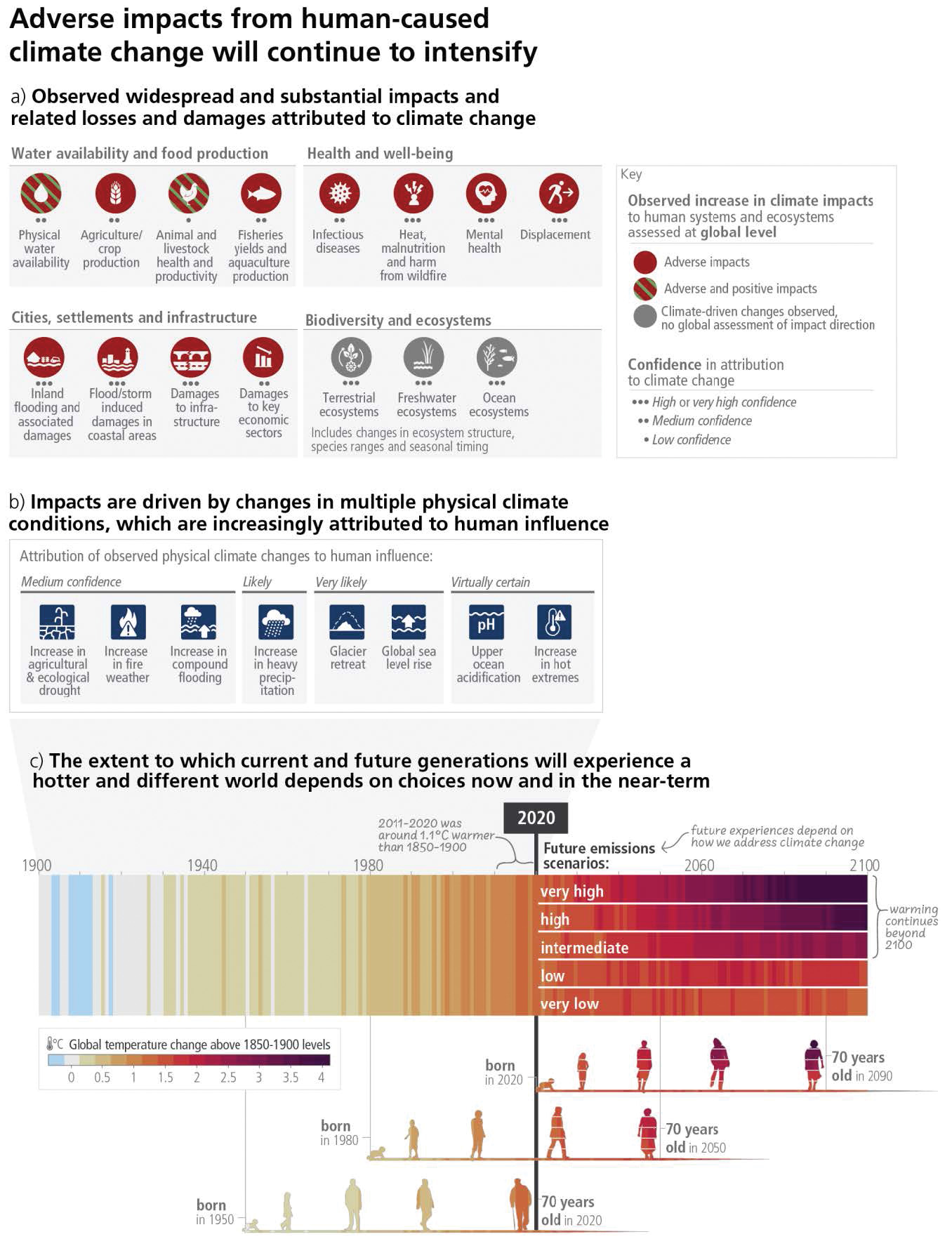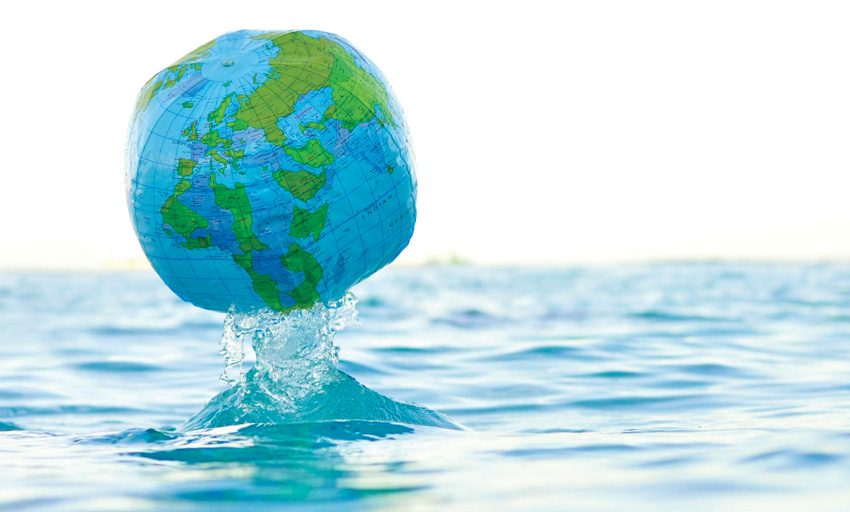
The biodiversity crisis: An EU perspective
2nd May 2023
Cyber-smart and energy efficient in times of crisis
2nd May 2023In some mid-latitude and semi-arid regions, and in the South American monsoon region, the annual hottest day temperature is projected to increase by between 50 per cent and 100 per cent more than the global average the latest Intergovernmental Panel on Climate Change (IPCC) Synthesis Report outlines.
Posing the stark facts along with suggestions for global policymakers, the IPCC Synthesis Report, published in March 2023, covers global temperature trends, what is causing them, and where action needs to be taken.
UN Secretary General António Guterres has stated that the report is the “last warning” for humanity. “Our world is at a crossroads – and our planet is in the crosshairs. We are nearing the point of no return, of overshooting the internationally agreed limit of 1.5oC global warming.”
Reacting to the news, Minister for the Environment, Climate and Communications, Eamon Ryan TD, said: “The science clearly shows that the main sources of greenhouse gas emissions are fossil energy use, unsustainable land use and land-use change, and unsustainable patterns of consumption and production. Effective international cooperation on targets and sectoral transformation is critical to reduce these emissions and to restrict global warming.”
Ryan’s takeaway from the publication of the report was to reiterate the measures being taken under the Climate Action Plan including the goal to reduce greenhouse gas emissions by 51 per cent by 2030, and an objective of reaching net zero emissions by 2050.
Risks and impacts
The IPCC has a ‘medium’ level of confidence in projecting that every region in the world is going to be adversely affected by climate change, thus emphasising the importance of global responses to reduce emissions and subsequent temperature rises.
However, it is likely that even if there is full implementation of UN member states’ ongoing climate plans, that they will serve as a mitigating, rather than reversing, factor in preventing global temperature rise. In other words, temperatures are destined to rise since too much damage has already been done, but that with the right kind of global mobilisation the rise in temperatures can be limited.
On the impact side, the IPCC report states: “Hazards and associated risks expected in the near term include an increase in heat-related human mortality and morbidity (high confidence), food-borne, water-borne, and vector-borne diseases (high confidence), and mental health challenges (very high confidence), flooding in coastal and other low-lying cities and regions (high confidence), biodiversity loss in land, freshwater and ocean ecosystems (medium to very high confidence, depending on ecosystem), and a decrease in food production in some regions (high confidence).”
Climate Action Plan 2023 spells out the ways which changes emanating from climate change have manifested themselves in Ireland, including:
• all seasons have seen a rise in temperature and the annual average surface air temperature has increased by over 0.9°C in the last 120 years;
• there has been a reduction in the number of frost days and shortening length of the frost season;
• sea levels around Ireland have risen by between 2 and 3mm per year since the early 1990s; and
• projections predict a significant reduction in average annual levels of spring and summer rainfall with a substantial increase in the frequency of heavy precipitation events in winter and autumn.
Unavoidable, irreversible, or abrupt changes
The IPCC has a high level of confidence in predicting that sea level rise is unavoidable, lasting between centuries and millennia, due to continuing deep ocean warming and ice sheet melt. Sea levels will remain elevated for thousands of years, it suggests.
The report further outlines: “Relative to 1995-2014, the likely global mean sea level rise under the SSP1-1.9 GHG emissions scenario is 0.15-0.23m by 2050 and 0.28-0.55m by 2100; while for the SSP5-8.5 GHG emissions scenario it is 0.20-0.29m by 2050 and 0.63-1.01m by 2100,” a prediction made with medium confidence.
The report further warns that, “due to deep uncertainty linked to ice-sheet processes, global mean sea level rise above the likely range – approaching 2m by 2100 and in excess of 15m by 2300 under the very high GHG emissions scenario – cannot be excluded”.
“There is medium confidence that the Atlantic Meridional Overturning Circulation will not collapse abruptly before 2100, but if it were to occur, it would very likely cause abrupt shifts in regional weather patterns, and large impacts on ecosystems and human activities.”
Mitigation and hope
Within Ireland and at a European level, there is confidence that the measures underway are going to help the State to transition its economy in line with the planet’s environmental needs. Whilst Minister for the Environment, Climate and Communications, Eamon Ryan TD, acknowledged the challenges raised in the report, he has reiterated that the Climate Action Plan is an adequate response, and that Climate Action Plan 2023 “sets out how Ireland can accelerate the actions that are needed to respond to this crisis, putting climate solutions at the centre of Ireland’s social and economic development”.
Adverse impacts from human-caused climate change will continue to intensify

Credit: IPCC





 Ossian Smyth TD
Ossian Smyth TD Florika Fink-Hooijer
Florika Fink-Hooijer Antoine Oger
Antoine Oger Laura Curtis-Moss
Laura Curtis-Moss Anthony Costello
Anthony Costello Anja Murray
Anja Murray Niall Ó Donnchú
Niall Ó Donnchú Mike Savage
Mike Savage Brian Carroll
Brian Carroll Claire Downey
Claire Downey Oisín Coghlan
Oisín Coghlan Stephen Onakuse
Stephen Onakuse Kevin O’Sullivan
Kevin O’Sullivan Susan Hegarty
Susan Hegarty Hendrik W van der Kamp
Hendrik W van der Kamp Philip Nugent
Philip Nugent Adrian Smyth
Adrian Smyth  Ainhoa Gonzalez Del Campo
Ainhoa Gonzalez Del Campo  Geoff Dooley
Geoff Dooley  Clare Pillman
Clare Pillman  David Greenfield
David Greenfield Danielle Conaghan
Danielle Conaghan Peter McEvoy
Peter McEvoy Triona McGrath
Triona McGrath J Owen Lewis
J Owen Lewis Gavin Smith
Gavin Smith Imelda Hurley
Imelda Hurley Lucy Gaffney
Lucy Gaffney Dr Venkatesh Kannan
Dr Venkatesh Kannan Kevin Hegarty
Kevin Hegarty Eimear Cotter
Eimear Cotter Aditya Arora
Aditya Arora Patric Child
Patric Child Eleanor Roche
Eleanor Roche Andy Bleasdale
Andy Bleasdale Andrew Muir MLA
Andrew Muir MLA Chris Hewitt
Chris Hewitt Francesca Racioppi
Francesca Racioppi Christopher Hammond
Christopher Hammond Laura Díaz Anadón
Laura Díaz Anadón Lorna McAdoo
Lorna McAdoo Conor Murphy
Conor Murphy  Mark Horton
Mark Horton  Niall McLoughlin
Niall McLoughlin  Zoe Kavanagh
Zoe Kavanagh Niall Ó Donnchú
Niall Ó Donnchú Venkatesh Kannan
Venkatesh Kannan David McGee
David McGee Anna Rose
Anna Rose Paul Hogan
Paul Hogan








